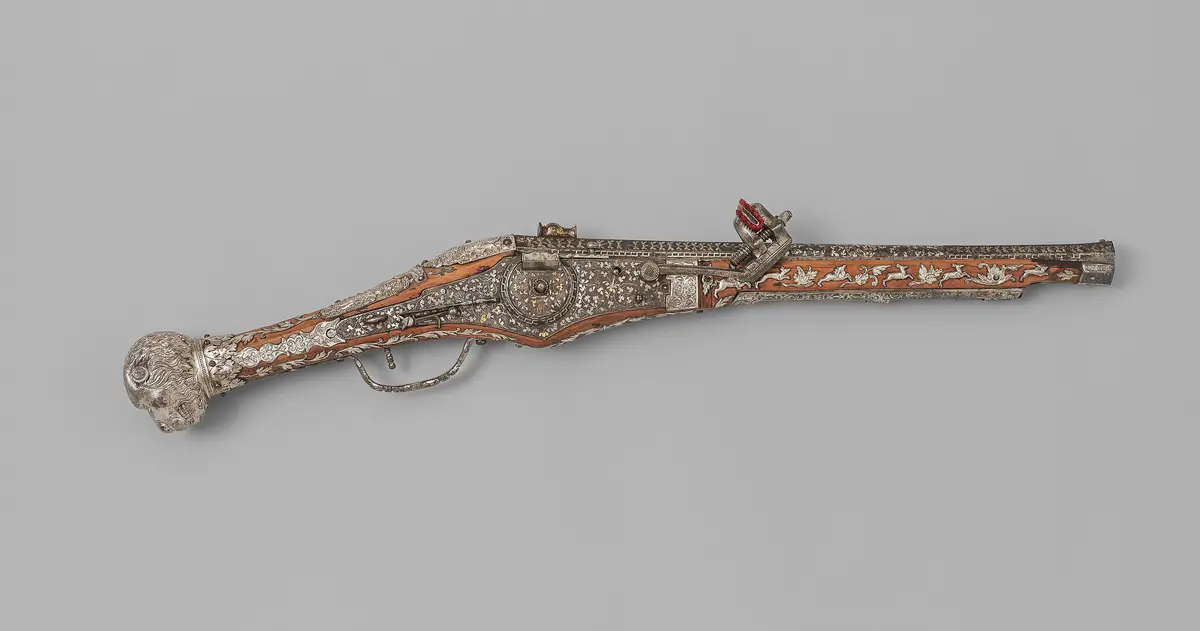Besitzer/in:
Erzherzog Ferdinand II. Sohn des Ferdinand I. von Habsburg Österreich, Landesherr von Tirol (1529 - 1595) DNB
Zeit:
um 1555
Objektbezeichnung:
Radschlosspistole
Kultur:
Braunschweig
Material/Technik:
Lauf: Eisen, geschmiedet, gebläut, teils mit Silber tauschiert. Visier: Eisen, feuervergoldet. Schlossplatte: Eisen, gebläut, teils mit Silber und Gold tauschiert. Schlossgegenplatte: Silberblech, teils getrieben, teils ziseliert und punziert. Knauf: Silberblech, getrieben, teils ziseliert, teils graviert, teils punziert. Schrauben: Eisen, gebläut. Hahn: Eisen, gegossen, teils geschnitten. Schaft: Nussholz. Einlegearbeiten, Appliken: Silber, teils getrieben, teils gegossen, teils ziseliert, teils graviert, teils punziert. Ladestock: Holz.
Maße:
L 64,5 cm x H mit gespanntem Hahn16 cm x B 6,5 cm
Gewicht: 2,20 kg
Bildrecht:
Kunsthistorisches Museum Wien, Hofjagd- und Rüstkammer
Inv. Nr.:
Hofjagd- und Rüstkammer, A 525
